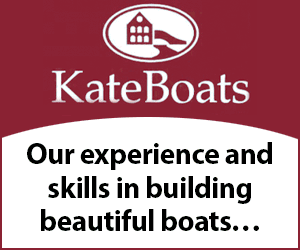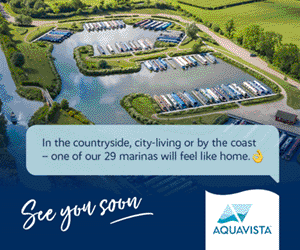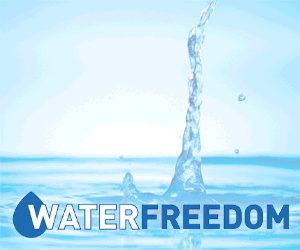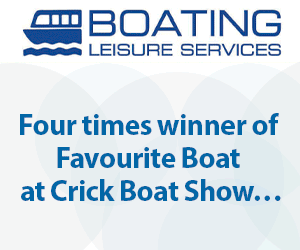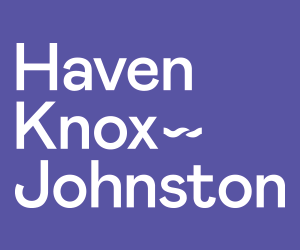Charlotte Ashman
Linocut artist Charlotte Ashman describes what it’s like being the latest custodian of a motor-and-butty pair of historic working boats

I live and work aboard the historic motor-and-butty pair Hyperion & Hyades, continuously cruising mainly on the waterways around Northamptonshire and selling my linocut prints at canal festivals and on the towpath. It was, however, a bit of a protracted journey getting here. I grew up near the canal in Blisworth and then after I finished university I rented a narrowboat for a little time, an experience which made me swear off boating and say I never wanted to live afloat again. That’s when I moved onto a converted vintage 1950s bus and lived in a field for a few years.
Around 11 years ago, I went back on my word and bought a modern 60ft narrowboat for me and my daughter to live on. The chance to own Hyperion then came along five years ago and, initially, I just used it as a floating art studio for my linocut print business.
Reuniting a pair
Hyperion is an ex-Grand Union Canal Carrying Company Small Woolwich/Star Class working boat, built in 1935 by Harland & Woolf, which was delivering coal on the southern GU before I acquired it. It was one of the craft used by the trainee boatwomen during World War II (run by Barlows which leased it from GUCCC), and appears in both the books Idle Women and Troubled Waters. At that time it was paired with butty Nebulae, which is still also operating today with Star Crafts.
Christian Vlasto was one of the women who crewed Hyperion during the war. She was an artist and when I contacted her nephew he sent me a drawing that Christian did while sitting in Hyperion’s cabin in the 1940s in response to me sending a picture of my linocut ‘Kettle’s On’ [above left]. Christian’s illustration had the same viewpoint – same type of kettle, a cloth hanging over the stove and a handbowl, but she also drew the steerer’s legs in the hatches. It was a very magical moment realising that another woman had sat where I now sit close to 80 years ago and had drawn the same thing.
Butty Hyades was also built in 1935 and it was originally paired with Hyperion. I was offered the opportunity to borrow Hyades for a short time, and then it came up for sale. It felt wrong to split up the pair, so I talked myself into buying it as well – it was a good excuse to do some motor-and-butty boating, rather than taking my old liveaboard and Hyperion everywhere separately. It also meant that my daughter could have her own space – she’ll be at college next year so she’ll live aboard Hyades rather than renting on land. It doesn’t have very much in terms of modern facilities so we’ll need to think about how to make it more comfortable.
Working boater lifestyle
Hyperion is now my home: I live like a Victorian would have in the original boatman’s cabin. There is no shower or washing machine – I wash out of hand bowls, take our clothes to the laundrette and then hang them up to dry in the butty.
Aside from painting, I’ve not made any changes to the interiors of Hyperion or Hyades so far. There is, though, always something that needs to be done to keep these historic craft afloat.
Making changes
I had Hyperion’s engine changed because the old one needed a complete overhaul and new gearbox, which would have meant the boat being held up in a dock for months and months. I would have had no way of making an income. Replacing the engine was the best choice for me as I could keep working and running the boats, and that’s what they were intended for – they were supposed to work.
There were some rumblings about me replacing the engine and I was told it was an original Barlow’s unit. It wasn’t – the engine had already been changed at least once before. It’s tricky making changes to a historic boat because it sort of belongs to everybody, it’s part of our collective waterways heritage.
Hyades was run as a horse-drawn trip-boat on the Grand Western Canal down in Tiverton for a while. The cabin was extended at that time so that people could sit inside the hold. I might take off the extension and put it back to its original design, but it also needs a proper galley and shower installing at some point. Deciding how to go about that is the difficult bit, rather than the actual work. You have to consider what’s best for the boat and how to maintain access to things like the knees and the bottom, which need regular maintenance.
Creative space
While the living space on Hyperion is compact, the hold provides plenty of room for an art studio. There are tables and storage for paper and paints, as well as the printing press I use for my linocut prints. There are also a few rows of planks at gunwale level where I set up my shop at the fore-end. I can get everything arranged inside and then just lift the cloths when I want to start trading – it’s convenient when the weather’s good but in the winter months the rain finds its way in and everything gets knocked over when it’s windy. I’ve had a few years of trying to find the best way to store paper in a damp hold and preventing it from becoming mouldy or crumpled. That’s been a learning process as these boats were never intended for long-term storage.
I’ve been a member of the Guild of Waterway Artists for around six years. I mainly make linocut prints, which involves a type of relief printing where you cut away sections of the printing plate that you don’t want coloured. A lot of my art features things that I see every day, so obviously there are boats, locks and views of the canal from a working boat perspective.
Evolving art
I’m always trying new things, and I think every artist is constantly exploring what they can do to get the ideas out of their head and onto the paper. Linocutting is my way of exploring new ideas within the bounds and practicalities of living afloat.
Everything that I sell is an original handmade print, with the exception of my greetings cards. My editions range from ten to 50 unique prints from each linocut printing plate, so you’re buying something that hardly anyone else has. Greetings cards are affordable and I like the process of sending people notes in a digital age – it’s more intimate.

Charlotte’s Arts
See instagram.com/charlottes_arts for more details about Charlotte’s artwork and where she’s trading. You can purchase her prints online from etsy.com/shop/NbHyperion.

